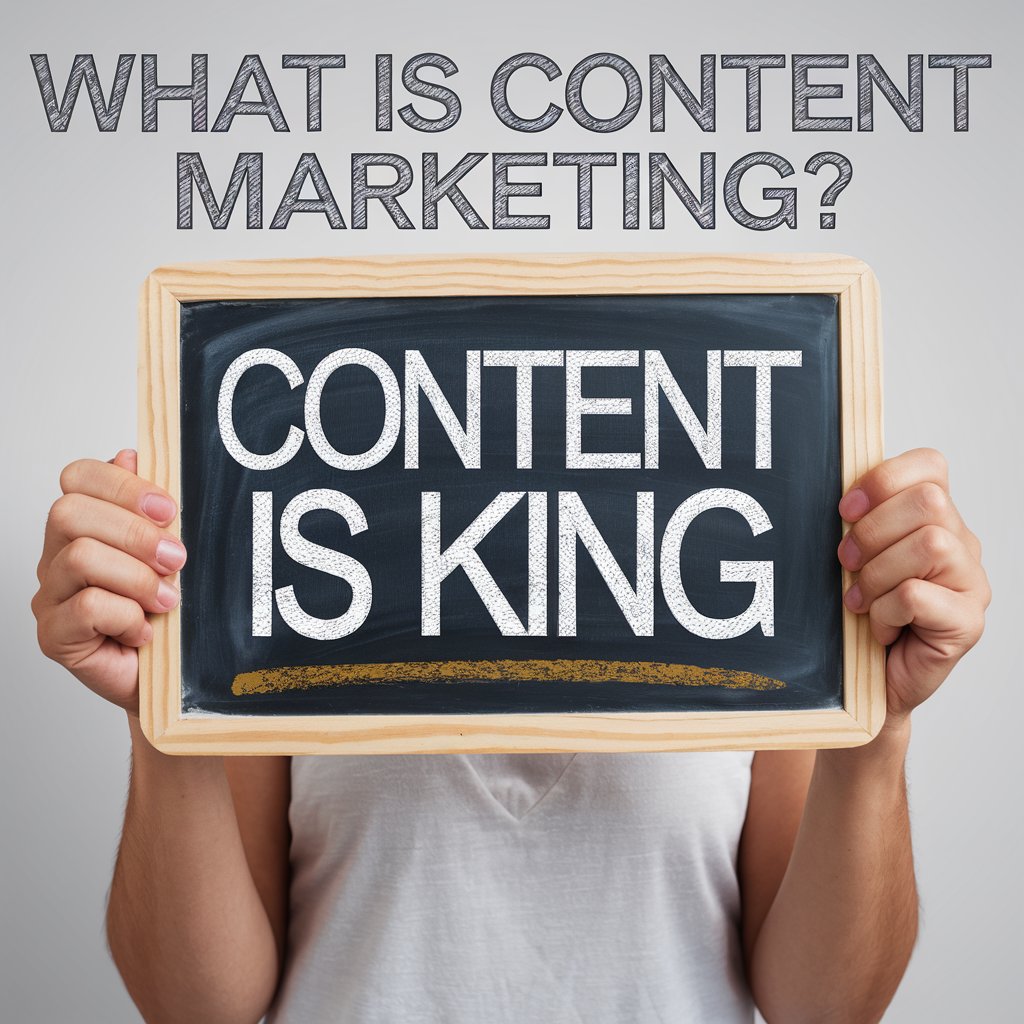In today’s rapidly evolving digital landscape, content marketing has become one of the most essential tools for businesses looking to engage their audiences and create lasting brand awareness. With the increasing competition for attention online, standing out requires more than just a good idea—it necessitates a carefully crafted content marketing strategy that delivers measurable results. From identifying your target audience to utilizing various platforms and strategies to amplify your content, a well-executed content marketing plan can transform your brand’s visibility and impact.
In this article, we will explore how to craft a winning content marketing strategy that takes your ideas and turns them into impactful content that resonates with your audience, encourages engagement, and drives meaningful results.
1. Understanding Content Marketing
Before diving into how to craft an effective content marketing strategy, it’s important to first understand what content marketing is and why it matters. At its core, content marketing is the creation and distribution of valuable, relevant, and consistent content aimed at attracting and retaining a clearly defined audience. Unlike traditional advertising, which often interrupts consumers, content marketing aims to build trust by providing useful information that addresses the needs, challenges, and interests of the audience.

The ultimate goal is to guide the audience through the buyer’s journey, from awareness to consideration and, finally, decision-making. A successful content marketing strategy focuses on long-term results, building brand loyalty, and fostering a positive relationship between a business and its customers.
2. Identify Your Audience and Set Clear Objectives
Every successful content marketing strategy begins with a clear understanding of who your target audience is. Without this foundational knowledge, your content will lack direction and relevance. Start by creating detailed audience personas, which represent the demographics, interests, behaviors, and pain points of your ideal customers.
Ask yourself key questions:
- What are their specific needs and pain points?
- What type of content do they consume, and where do they engage with it?
- What challenges do they face in relation to your product or service?
- What are their preferences for content formats (blog posts, videos, podcasts, etc.)?
Once you have a clear picture of your audience, it’s time to establish your objectives. What are you trying to achieve with your content? Your objectives could include increasing brand awareness, driving website traffic, generating leads, improving SEO, or enhancing customer retention. Defining your goals upfront will help you shape your content and measure its effectiveness.
3. Choose the Right Content Formats and Channels
Not all content formats are created equal, and selecting the right type of content is essential for reaching and engaging your target audience. Consider the following popular content formats:
- Blog Posts: These are one of the most effective forms of content marketing for driving organic traffic and providing valuable information to your audience. When crafting a blog post, focus on creating high-quality, informative, and well-structured content that aligns with your audience’s needs. Using keywords strategically within your blog can also improve your search engine ranking.
- Videos: Videos are highly engaging and have become one of the most popular forms of content consumed online. Whether it’s educational, entertaining, or product-based, video content allows you to connect with your audience in a more personal and dynamic way.
- Infographics: Infographics are a powerful way to convey complex information quickly and clearly. They are highly shareable and often receive more engagement than text-based content.
- Social Media Posts: Social media platforms such as Facebook, Instagram, LinkedIn, and Twitter provide opportunities to reach your audience directly. Tailor your content to each platform’s format and audience for maximum engagement.
- Guest Posts: Guest posting is a strategic approach that involves writing content for other websites within your niche. This can significantly expand your reach and establish your authority within your industry. By contributing valuable insights to reputable platforms, you can tap into new audiences and generate backlinks that benefit your SEO efforts.
Choosing the right channels is just as important as selecting the right format. Different platforms serve different purposes, and understanding where your audience spends their time will help you determine the best places to distribute your content. For example, LinkedIn is a great platform for B2B content, while Instagram is better for visually appealing and lifestyle-oriented brands.
4. Develop a Content Calendar and Consistent Workflow
A content calendar is essential for staying organized and consistent with your content creation efforts. It helps you map out what content you will create, when it will be published, and on which platform. Having a content calendar in place ensures that your content is spread out over time, aligns with key business goals, and maximizes its impact by syncing with important dates or events.
When developing your content calendar, consider the following:
- Frequency of Posting: Decide how often you want to publish content on each platform. Consistency is key to building trust and keeping your audience engaged.
- Seasonal and Industry-Specific Events: Incorporate any relevant holidays, industry trends, or events into your content schedule to ensure your content is timely and relevant.
- Content Types: Plan the types of content that will be published each month. For example, you might have blog posts, social media posts, videos, and email newsletters.
Alongside your content calendar, establish a consistent workflow that outlines the roles and responsibilities of your team. This will help streamline the content creation process and ensure that deadlines are met.
5. Create High-Quality Content
Creating high-quality content is the cornerstone of any successful content marketing strategy. No matter the format or platform, the content should always be valuable, relevant, and well-crafted.
Focus on the following:
- Value: Content should address the needs and pain points of your target audience. It should offer real solutions, insights, or entertainment that keeps your audience coming back for more.
- Clarity: Keep your messaging clear and concise. Avoid jargon or overly complex language. The easier it is for your audience to understand your message, the more likely they are to engage with it.
- Authenticity: Authenticity builds trust with your audience. Make sure your content is aligned with your brand’s voice and values. Your audience should feel like they’re connecting with a real person, not just a faceless corporation.
- SEO Optimization: To maximize the impact of your content, ensure it’s optimized for search engines. This involves using relevant keywords (like guest post) throughout your content, creating engaging meta descriptions, and optimizing images with alt text. High-quality content that’s SEO-optimized is more likely to rank well in search engine results, driving more organic traffic.
- Visual Appeal: Visuals play a crucial role in capturing attention and boosting engagement. Whether it’s images, infographics, or videos, using high-quality visuals in your content can significantly improve its effectiveness.

6. Promote Your Content and Measure Performance
Creating great content is only half the battle—getting it in front of the right audience is just as important. Content promotion involves sharing your content through various channels, including:
- Social Media: Share your content on your social media profiles, using relevant hashtags and tagging influencers or partners when appropriate.
- Email Newsletters: Send your content directly to your subscribers through email marketing. Personalize the emails and provide value to the recipients, enticing them to click through and engage with your content.
- Paid Advertising: If your budget allows, consider using paid advertising on platforms like Google Ads, Facebook, or LinkedIn to promote your content to a broader audience.
In addition to promotion, it’s important to track the performance of your content. Use analytics tools like Google Analytics, social media insights, and email marketing metrics to measure key performance indicators (KPIs) such as:
- Traffic: How many people are visiting your website or landing page as a result of your content?
- Engagement: Are users liking, commenting, sharing, or interacting with your content?
- Lead Generation: Are your content pieces generating new leads or sign-ups?
- Conversions: Are you driving the desired actions, such as purchases or downloads?
Regularly reviewing these metrics will help you understand what’s working and what needs improvement, enabling you to refine your content marketing strategy over time.
7. Guest Posting as a Growth Strategy
Guest posts are a powerful tactic in content marketing, allowing you to expand your reach and build authority in your industry. By contributing content to reputable blogs or publications in your niche, you can establish yourself as an expert and tap into a new audience. When guest posting, focus on creating valuable and insightful content that will resonate with the publication’s audience.
In addition to building credibility, guest posting can also drive traffic to your website through backlinks. These links not only increase your website’s authority but can also improve your search engine rankings. It’s important to build relationships with other bloggers, writers, or website owners in your industry to increase the chances of getting your guest posts published on high-traffic sites.
Conclusion
Creating a winning content marketing strategy is an ongoing process that requires careful planning, execution, and analysis. By understanding your audience, selecting the right content formats and channels, maintaining a consistent workflow, and promoting your content effectively, you can ensure your content makes a meaningful impact. Additionally, leveraging guest posts can be a powerful way to expand your reach and build credibility within your industry.
Remember that content marketing is a long-term commitment. By staying consistent, measuring your performance, and continuously optimizing your approach, you’ll turn your ideas into impactful content that drives results and elevates your brand.




